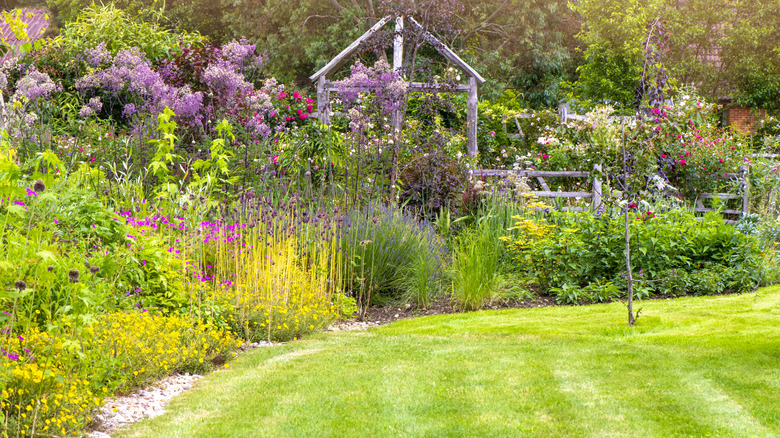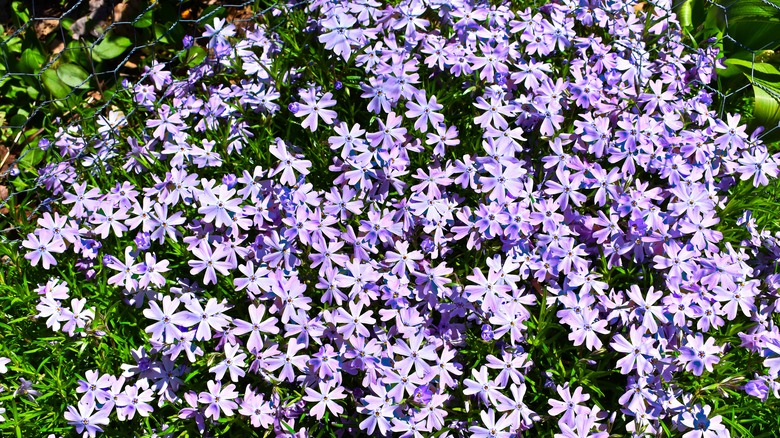Native Ground Cover Alternatives For Vinca Minor That Won't Take Over Your Yard
If you're dealing with a difficult spot in your yard where nothing else seems to grow, you might be tempted by the promise of an easy, evergreen groundcover like common periwinkle (vinca minor). It can grow in both full sun or shade. It forms a dense, year-round mat of green that hugs the ground, never growing more than 3 to 6 inches tall. During spring, it's dotted with pretty little flowers in shades of purple, blue, or white.
A native to Europe and Asia, common periwinkle has been classified as invasive throughout much of the eastern United States for the same reasons that gardeners typically favor the plant. The fast-spreading, invasive groundcover can crowd out native plants and create a year-round barrier that prevents them from ever gaining a foothold in the landscape. This makes it an aggressive competitor that can quickly escape cultivation, invading natural areas and taking over your garden if left unchecked.
The good news is that there are plenty of native, easy-to-grow groundcover plants, like wild ginger, woodland phlox, or barren strawberry that can thrive in the same tricky spots that gardeners usually put common periwinkle in. By opting for a native alternative, you're not only keeping an invasive out of your yard, you're also adding something that's beneficial to the ecosystem which happens to be perfectly adapted to the climate and conditions of your area.
Native alternatives that are similar to vinca minor
While there are many great native groundcovers in the U.S., the best native plants to replace invasive periwinkle include wild ginger, woodland phlox, and barren strawberry. These native plants thrive in similar conditions and perform many of the same landscape purposes that gardeners use periwinkle for. Wild ginger, or Canadian wild ginger (Asarum canadense) is a low-growing, shade-loving plant that forms colonies of heart-shaped leaves that typically reach 4 to 8 inches tall. It's not evergreen like periwinkle, but it also doesn't spread as aggressively. This makes it a good groundcover for small areas or as edging along a walkway — especially for shady, wet soils. The rootstock also has a gingery flavor, making it a great substitute for store-bought ginger.
If the pretty periwinkle flowers are what you're after, consider woodland phlox (Phlox divaricate) instead. From March through June, this native groundcover is dappled with clusters of pink, purple, or white flowers. Through the rest of the year, the shade-loving foliage is evergreen in some parts of its range, so you can enjoy lush groundcover all year round.
Another great native alternative to periwinkle is barren strawberry (Waldsteinia fragarioides). Native throughout most of the eastern half of North America, barren strawberry is a low-growing, evergreen groundcover that looks a lot like strawberry, but without the edible fruit — hence, the name "barren strawberry." If you need something that tolerates direct sunlight better than wild ginger or woodland phlox, this is the one to choose. It grows in both full sun and part shade. It can also tolerate dry conditions and a wide range of soil types.

